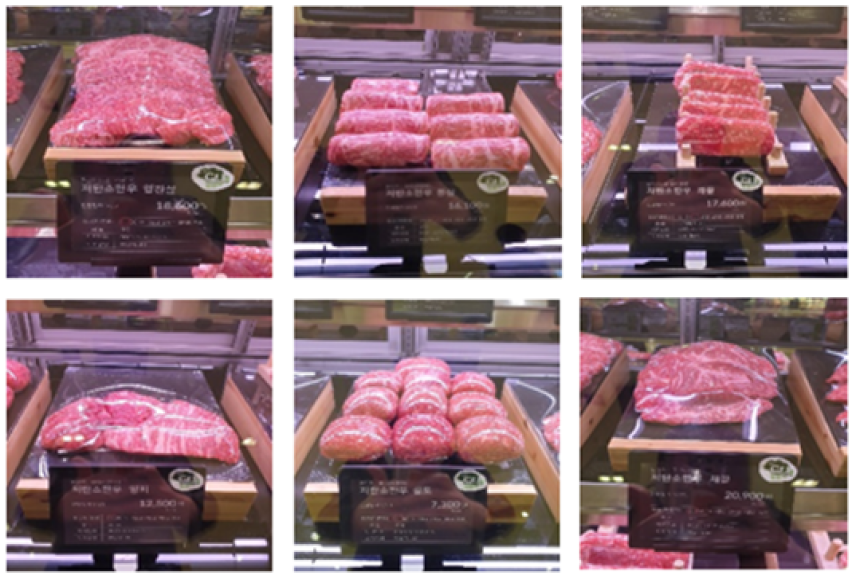Carbon emission quantification solution
Linkage and input of information
-
cattle slaughter
history - Confirmation of certification examination
-
Process
(calculation) - Balance of carbon emissions and carbon credit
-
AEarly market weight (securing superior breeding stock)
-
BLow-carbon feed (methane generation reduction)
-
CLivestock manure management (manure greenhouse gas reduction)
-
D EApplication of energy saving technology (solar light, new renewable energy)
General Environmental Carbon Emission Formula(unit : kgCO2eg/kg)
Emissions per kg of carcass = 198.2 (CO2eg) × Raising age (month) / Carcass weight (kg)
General Environmental Carbon Emission Formula(unit : kgCO2eg/kg)
Emissions per kg of carcass = 107.7 (1 - B) × (1 - C) + 40.5 × (1 - D) + 16.6 × (1 - E)
A = Raising age (month) / Carcass weight (kg)
A = Raising age (month) / Carcass weight (kg)
Average Carbon Emissions
- Enteric fermentation 7.07
- Manure treatment 2.19
- Power energy 3.75
- Total 13.01
Low-carbon certification requirements
- Growth environment certification
- Use of GHG emission reduction technology - Use of superior breeding genome
- Less than standard carbon emissions
Low-carbon cattle production technology
-
01.
Low-carbon superior breeding genome acquisition stage among samples (Use of cattle history information)
-
02.
Characteristic setting step related to carbon emission per meat weight (Standard item setting)
-
03.
Estimating the breeding value of traits related to carbon emissions
-
04.
The step of selecting an individual to be mated with a corresponding individual with a standard ratio or higher
-
05.
Genomic information acquisition step for each individual in the reference group
-
06.
Reference group growth history and carbon emission verification step
Verification completed up to 6 stages of genome analysis
-
07.
Carbon reduction of selected offspring, molecular breeding information prediction step
-
08.
Superior genome selection and breeding growth monitoring step
Continuous activities in the predictive monitoring stage
Distribution of genetic capacity of cow herds by farm, and analysis of genetic factors for carbon emissions and intramuscular fat
Establishment of a low-carbon beef distribution channel in response to the paradigm shift in the cattle industry
(regular beef -> low-carbon beef)
(regular beef -> low-carbon beef)
Current distribution structure
Distribution structure of Melliens
Melliens's Strategies for utilizing the low-carbon certification mark

When supplying corporate welfare malls, the company logo is displayed on the Melliens' certification mark Enhancing image as an ESG practicing company
- Melliens
-
Domestic large
corporations

